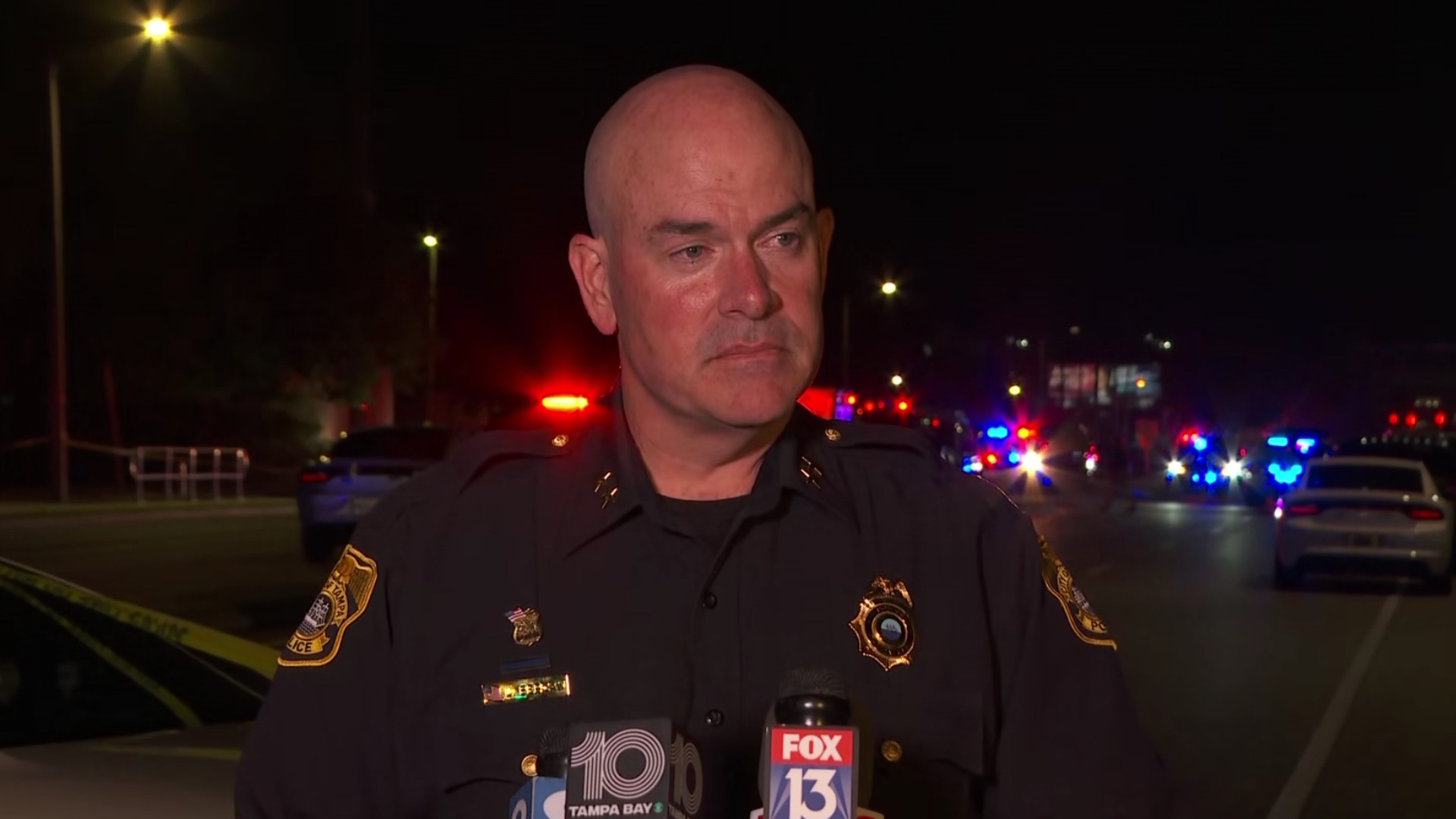TAMPA – In a mass-casualty situation, the Tampa Bay region's only Level 1 trauma center—Tampa General Hospital—has a plan to respond, said Tony Venezia, the hospital's director of security and emergency management.
"I think we're very prepared," Venezia said. The hospital, in partnership with the county, runs annual drills to prepare for the possibility of an influx of patients all needing critical treatment at once.
10News asked emergency managers at area trauma centers about their preparedness plans following an overnight shooting on the Las Vegas strip that killed nearly 60 people and left more than 500 others hospitalized.
Rep. @RubenKihuen on visiting a Las Vegas hospital: "Every single bed was taken. Every single hallway was full. Every single room was full." pic.twitter.com/0s3Y5sqdU6
— CBS News (@CBSNews) October 2, 2017
The situation forced hundreds of people into area hospitals all at once, overwhelming medical responders. Nevada has just one Level 1 trauma center in the state: University Medical Center in Las Vegas.
"When you see catastrophic injuries like we saw in Las Vegas caused by military grade weapons, it's about understanding that those patients are going to need extensive, critical care right then."
Continuing coverage: Las Vegas shooter Stephen Paddock has ties to Florida
If something similar were to happen in Tampa, Venezia said the valet parking garage beneath the hospital's emergency room would be transformed into a triage area to treat and sort patients.
"We want to maintain the operation of our regular ER upstairs by treating people down below," he said. "It’s really about how to streamline those patients and get them treated the best you can and manage the crowds that come along with the patients.”
To better plan for a mass shooting or similar situation, Venezia said his team worked closely with emergency managers at Orlando hospitals after the Pulse nightclub shooting.
Erinn Skiba, TGH's emergency preparedness manager, said the hospital has room to grow it's ER from 74 beds to more than 200, with room for several hundred additional patients in the parking garage in the event of a mass casualty situation.
While they've never had to put their plan into action, Skiba says they're thoroughly equipped with an on-site blood bank and supply stockpile to respond.
"We take it very seriously, every time something like this happens," she said. "You hate to see it and you have to come back and reflect on how would we be able to a handle a similar situation.”
Trauma centers, unlike a regular hospital, have resources to provide immediate, specialized care to patients suffering life-threatening injuries, said Dr. Nick Namias, chairman of the Florida Committee on Trauma.
"Your regular hospital doesn’t keep a surgeon in the hospital all the time or even have someone able to do trauma surgery who can come from home to respond if called," Namias said.
Trauma centers are designated by the level of care they provide. Centers generally must have a surgeon and an anesthesiologist immediately available, staffed operating rooms, a blood bank and evidence of programs that review quality, Namias told 10News.
In the Tampa Bay region, there are eight trauma centers. But TGH is the only Level 1 center. Level 2 trauma centers in the area include:
- Bayfront Health St. Petersburg, Pinellas
- Blake Medical Center, Manatee
- Lakeland Regional, Polk
- Regional Medical Center Bayonet Point, Pasco
- Sarasota Memorial, Sarasota
- St. Joseph's Hospital, Hillsborough
Johns Hopkins All Children's Hospital in St. Petersburg is a pediatric trauma center. A spokesperson provided the following statement:
Johns Hopkins All Children's Hospital has an emergency response team that is available for activation in any mass casualty situation. Hundreds of emergency patients could quickly overwhelm any hospital. That is why we prepare a mass casualty plan in order to increase our capacity in terms of people, supplies and resources to meet the need. We do drills on a consistent basis that involve multidisciplinary staff and teams throughout the organization and have sent staff and leadership to FEMA training programs to be better prepared for these types of situations. Our physicians and nursing staff are trained to care for critically injured patients. We also partner with local law enforcement and first responders during these drills and we have a collaborative relationship with Bayfront Health for Pediatric Trauma.
►Make it easy to keep up-to-date with more stories like this. Download the 10 News app now.
Have a news tip? Email tips@wtsp.com, visit our Facebook page or Twitter feed.


